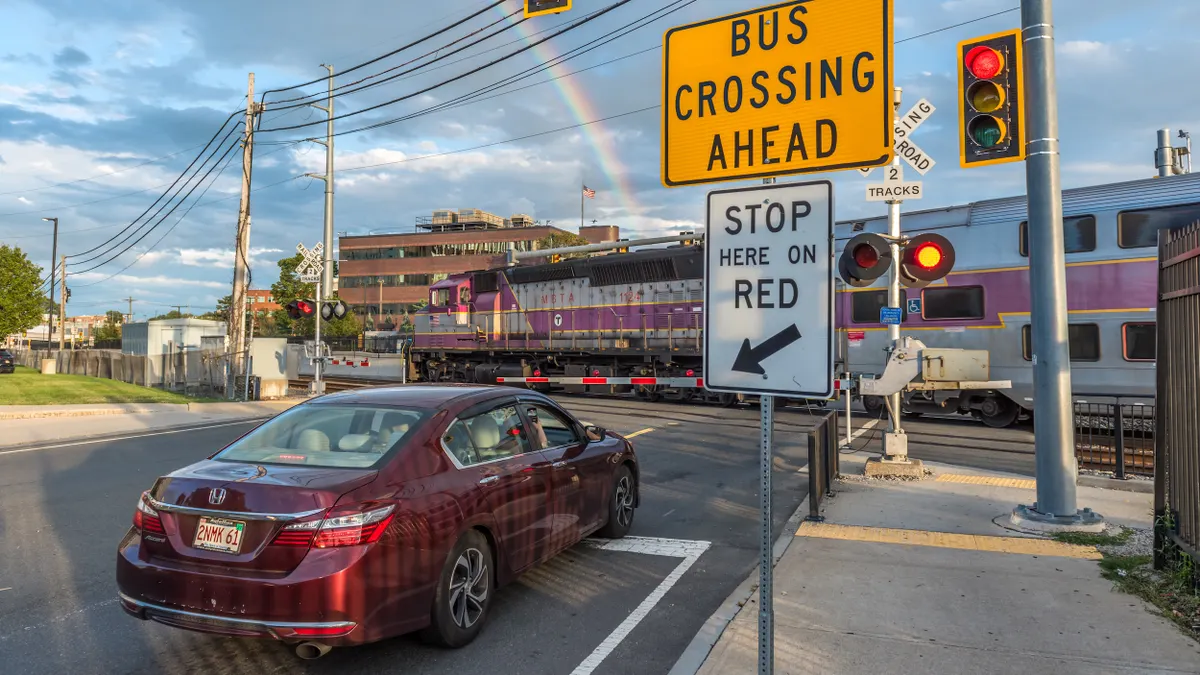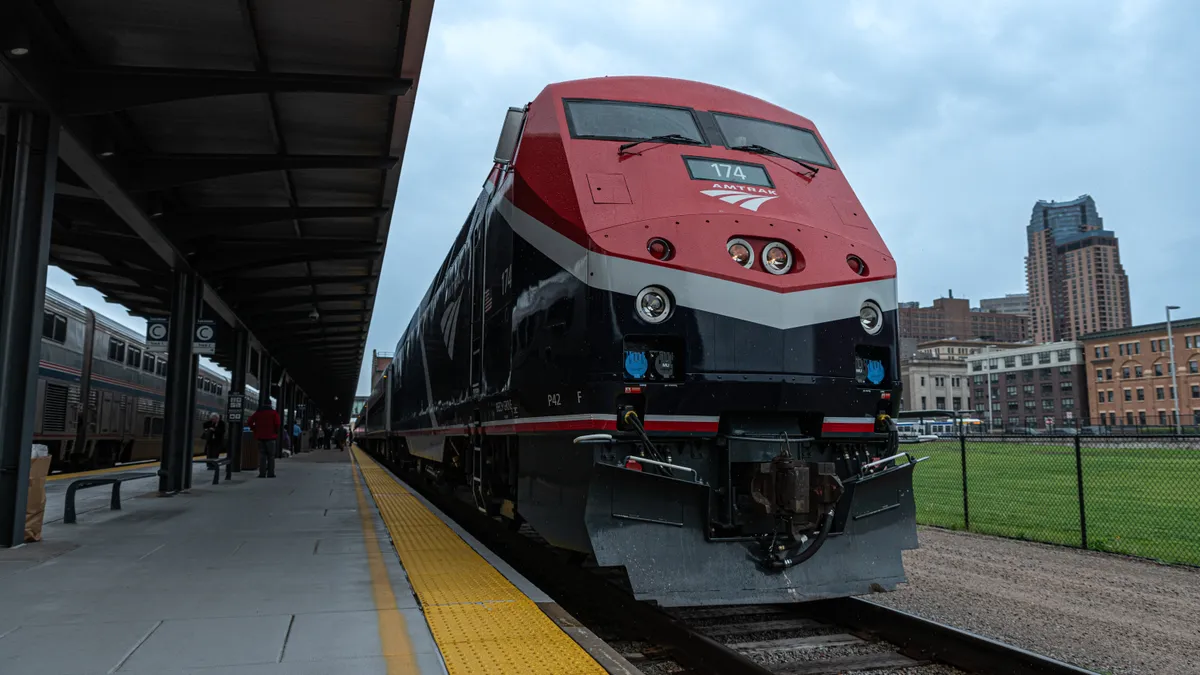For a rapidly evolving "industry" like smart cities, it can be difficult to narrow down a list of transformational innovations or trends that shape the year. From advancements in autonomous vehicles (AVs) to the explosion of blockchain technology, cities were constantly abuzz with opportunities to bloom in 2018, not only in size and talent but also in reputation as "smart" urban hubs. But which trends were the most impactful?
After assessing our top stories and analysis of the year, Smart Cities Dive has identified the following trends as having the most influence in shaping the smart city space in 2018.
1. Dockless scooter-sharing
If one trend were to take the crown on this year's "most influential" list, it would certainly be the birth of dockless scooter-sharing services. The scooter industry turned shared mobility on its head in 2018, specifically following Lime's introduction of electric scooter sharing in February, which spurred competition with emerging scooter startup Bird. Slowly more scooter companies started coming online, and now cities from coast to coast are welcoming the vehicles from Spin, Skip, Scoot, Razor, Jump, Lyft and more.
Some cities have been more stoked on the introduction of the scooters than others. While the dockless vehicles have allowed for more affordable, sustainable rides across town, they've also become the center of issues around vehicle "littering" and destructive consumer behaviors. Injuries also became so common for scooter riders that the Centers for Disease Control and Prevention (CDC) announced it would conduct an epidemiological study of the vehicles in Austin, TX to assess injury reports and help the city government take further action on dockless vehicle governance.
Despite some early red flags, the scooter industry will continue to grow rapidly next year with Bird and Lime leading the pack. Both spread to more than 100 cities in 2018 and are now worth an estimated $2 billion and $3 billion, respectively.
2. 5G deployment (and lack thereof)
As anticipated in early 2018, this year was one centered around 5G deployment hype — though it resulted in little execution. CES 2018 was a major launching point for 5G buzz, with companies touting how their networks would begin to go live by the end of the year. Verizon got a lead in the race when it launched its first commercial 5G service, Verizon 5G Home, in four cities on Oct 1. — to the chagrin of T-Mobile CEO John Legere — and AT&T rounded out the year with the launch of its mobile 5G service in 12 cities (but only on its mobile hotspot devices).
Aside from citywide service launches, efforts to streamline the deployment of 5G infrastructure increased in 2018, with the Federal Communications Commission (FCC) voting in September to approve a controversial plan that would cap the fees that cities can charge to telecom companies. Some cities have since launched legal action over the order, with leaders pleading for the government to step aside and let the private sector take the lead on 5G advancements.
Next year the buzz is bound to continue, as the country's major telecoms move closer to launching ubiquitous 5G coverage from coast to coast. T-Mobile and Sprint are also inching closer to a planned merger, which is bound to shake up the 5G competition.
3. Consolidation in mobility
Mobility-as-a-service (MaaS) development was a shining star of 2018 as an abundance of new mobility offerings came online. Scooter- and bike-share services quickly became as popular in dense urban settings as the ride-hailing options that came before them, leading some mobility giants to jump on opportunities to capitalize on the new offerings.
The first taste of significant consolidation among shared mobility companies came in April when Uber acquired Jump for an estimated $200 million, helping that company advance its offerings and increase efficiencies in customer services and engagements. Soon after, Lyft acquired docked bike-share company Motivate in July — leading Lyft to launch its own line of bikes and scooters — and Ford boosted its presence in the shared mobility space with an acquisition of Spin in November. It is expected that more of these scooter- and bike-share companies will be bought up in 2019, with Uber hinting it may make a multibillion-dollar purchase of Lime or Bird.
4. Reduction of car dependency
Some of the aforementioned acquisitions fit into a trend that was consistent throughout 2018: cities and companies promoting less personal vehicle usage. In February, 15 mobility companies signed a joint pledge to promote livable cities, highlighting the need to "prioritize people over vehicles" and "support the shared and efficient use of vehicles, lanes, curbs and land." These signatories included shared mobility companies such as Lime, Uber and Lyft, while larger automakers like BMW and General Motors (GM) have followed suit by changing business operations to focus less on traditional cars.
Cities have done their part to reduce car dependency as well, not only through partnerships with shared mobility services, but also through policies to reduce parking mandates and initiatives to increase public transit access and city walkability.
5. Increased accessibility & equity
For many city leaders, prioritizing accessibility and equity has become just as important as prioritizing the implementation and use of smart technologies. From efforts to make transit more accessible through new payment structures, to initiatives that improve navigation for the visually impaired, 2018 saw many efforts nationwide to make smart cities more inclusive for all.
While most industry leaders have already laid the groundwork to improve in these areas, the path toward full inclusiveness is long. Some ride-hailing companies, for example, expanded wheelchair-accessible offerings in 2018, yet those offerings are not yet ubiquitous on their platforms. And while some cities like Boston have hosted workshops and roundtables to discuss how to build more socially resilient cities, executing on such ideas must be a priority in 2019.
6. Increased focus on cybersecurity
While cities are no strangers to cyberattacks, they have certainly become more sophisticated in their plans to protect residents and data from falling victim to compromised systems. As some cities have turned to public-private partnerships to defend against hackers, others have run drills to directly train officials in dealing with attacks. In July, the City of Houston ran a three-day exercise known as the Jack Voltaic 2.0 Cyber Research Project to help test the city's ability to deflect and cope with cyberattacks.
New York is hoping to become a leader of cybersecurity innovation trough Cyber NYC, which will receive $100 million in investments from public and private partners and will create 10,000 jobs in the sector over the next 10 years. In 2019, it is likely more cities will use Cyber NYC as a blueprint on how to develop their own cybersecurity programs that not only increase resiliency but also bolster talent in the workforce.




















